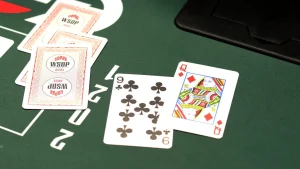The felt-covered table. The clinking of chips. The unreadable poker face. For centuries, poker was a game of human intuition, gut feelings, and psychological warfare. But that’s changing. Fast. The quiet hum of a server rack is now the soundtrack to a strategic revolution.
Artificial intelligence and machine learning have crashed the poker party, and they’re not just observing—they’re fundamentally rewriting the rulebook. Let’s dive into how these technologies are reshaping how the game is played, from high-stakes tournaments to your weekly home game.
From Gut Feeling to Data-Driven Decisions
Remember the old-school pros who relied on “feel”? That’s becoming a relic. AI has introduced a new era of hyper-rational, mathematically sound play. It’s the difference between navigating by the stars and using GPS.
The biggest leap came from Libratus and later, Pluribus. These AIs didn’t just beat the world’s best players; they embarrassed them. And in doing so, they revealed a blueprint for near-perfect strategy. The key takeaway? Humans were, well, emotional. We were too predictable, too exploitable.
Game Theory Optimal (GTO) Play: The New Baseline
This is the term you’ll hear everywhere now. GTO is a strategy that is mathematically unexploitable. You can’t beat it in the long run. Think of it as a perfect rock-paper-scissors algorithm—it doesn’t care what you throw; it can’t lose.
Before AI, GTO was a theoretical concept. It was too complex for humans to calculate at the table. Now? AI solvers—software that crunches billions of simulations—spit out these perfect strategies for specific situations. Players study these outputs religiously.
Here’s a simple example of how a solver might break down a common scenario:
| Situation | Old Strategy | AI-Informed GTO Strategy |
| Button open-raise | Raise with strong hands only | Raise with a balanced range of 38% of hands |
| Facing a 3-bet from the blinds | Fold most, call or 4-bet with monsters | 4-bet bluff 40% of the time with specific suited connectors |
| River bet on a flush-completing card | Bet big if you have the flush, check if you don’t | Bet small with both flushes and some missed draws for balance |
This data-driven approach removes guesswork. It tells you exactly what to do with which hand, how often to bet, and what size to use to remain perfectly balanced and impossible to read.
The Arms Race: Solver Software and Training Tools
This isn’t just for PhDs in computer science. A whole industry of consumer-facing tools has exploded. Amateurs and pros alike now spend more time studying with AI than actually playing. It’s the modern poker lab.
These tools allow players to:
- Run simulations: Plug in a hand history and see what the GTO play would have been.
- Identify leaks: The software highlights deviations from optimal strategy—your personal mistakes.
- Practice: Train against AI opponents that play a perfect game, hardening your own skills.
The barrier to entry has been lowered, honestly. You don’t need 20 years of experience to understand complex spots. You need a subscription and the discipline to study. This has dramatically raised the overall skill level of the player pool. The fish are getting smarter.
The Human Counterpunch: Exploitative Play
Here’s where it gets fascinating. As everyone learns GTO, a new skill becomes paramount: the ability to deviate from it. This is called exploitative play.
AI gives you the perfect baseline. But if you notice your opponent never bluffs the river, the GTO strategy (which assumes a balanced opponent) is suddenly wrong. The correct human move is to exploit that weakness—fold more often because you know they only bet with strong hands.
So the modern poker player needs a dual brain:
- The Machine Brain: Knows the theoretically perfect play cold.
- The Human Brain: Observes, adapts, and exploits the flaws in the humans who are trying to mimic the machine.
The game is becoming a meta-battle of who can best identify and capitalize on these tiny inefficiencies. Psychology is back—it’s just now informed by insane amounts of data.
The Dark Side? Game Integrity and the Bot Threat
Let’s be real. It’s not all positive. The same technology that helps players learn is also used to create poker bots—AI programs that play online illegally. These bots can run 24/7, never tire, and execute flawless GTO strategy.
This is a massive pain point for online poker sites. The integrity of the game is at stake. Thankfully, the sites are fighting back with their own machine learning algorithms designed to detect non-human patterns of play. It’s a silent, high-stakes AI war happening under the surface of every major poker site.
The Future of the Felt
Where does this leave us? The romantic era of pure instinct is fading. But a new, more complex era is emerging. The winners of tomorrow won’t be the ones who memorize the most solver outputs, but the ones who can best integrate that knowledge with timeless human skills: observation, adaptability, and courage.
The machine has shown us the mountain peak of perfect play. No human can actually reach it—the math is too vast. But we can all climb higher now that we know the path. The game isn’t dead; it’s just been upgraded.




